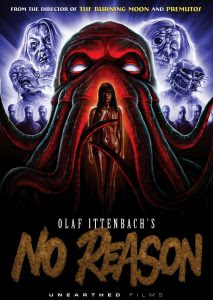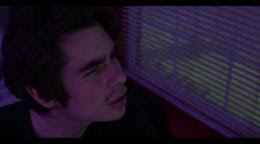Text © Richard
Gary / Indie Horror Films, 2021
Images from
the Internet
Girt by Fear
Web Series
Directed by Yiani
Andrikids; David Ma; Madeleine Purdy
Girt by Fear
100 minutes, 2016
www.imdb.com/title/tt6190210/?ref_=fn_al_tt_1
https://goo.gl/yPSEkc
Girt by Fear is a six-episode Web series of connected short films from Australia. I first became aware of it when one of the stories was included in a horror anthology called Dark Whispers – Part 1, which collected the works of Aussie women directors. I thought checking out the Web series might be a fun endeavor, especially since all these have a warped sense of humor about them. All the episodes are free HERE.
Part 1:
Nightmare on Australia Street: 4:07; directed by Yiani Andrikids
A man in his 20s
(Caspar Hardaker) is trying to invite his dicey friends to the Halloween party
to end all Halloween parties. He’s so into getting the invitation online, that
he completely ignores the advance of his girlfriend (Pearl Spring Voss).
Personally, I think she could do better. Anyway, the Internet goes out and he
tries something innovative, to the effect of… well, you’ll have to see. It’s a
really fun and quick short, and a great opening shot across the Web.
Part 2: It Came
from Outer Suburbia: 8:04; directed by David Ma
Andy (George Zhao)
has been invited to a Halloween party (same as the first part). He’s obsessed
with space travel and dresses up like an Astronaut for the shindig. His parents
are afraid of him becoming “Australianized” and even possibly being – dare I
say it – gay. But there is a family secret that will be revealed that is quite
fun. The prosthetics are quite well done, though I question the “pink for girls
and blue for boys” motif. There are some definite underlying gender politics at
play here, which is amplified by it being an immigrant family known for
tradition.
Part 3: Only
Wankers Left Alive: 7:42; directed by Yiani Andrikids
Flower (Steph Tsindos)
and Taylor (Michael McStay) are a couple on their way to an art gallery opening
and an act of performance art. They could be considered less hairy hipsters,
but they are definitely obnoxious and full of their own privilege. When they
come across some scraggy person spitting up blood, they just continue on their
way rather than trying to help. That type of self-involved people. It kind of
not hard to see where it’s going when they pick up a woman artist from Romania
(Sarah Jane Kelly) – you know, Transylvania – for a tryst and a bite. But
figuring that out at the half-way point only made me lick my lips for more. And
the end was both a surprise and worth the staying around for. I had a good
laugh at this one.
Part 4: Little
Share House of Horrors: 9:02; directed by Madeleine Purdy
I was going to call
this a black comedy, but perhaps a better description might be “green humor.”
A young woman, Maeve (Georgia Wilde) gets ahold of a plant from a dicey shop
owner (scene stealer Colan Leach) and brings it home to the house she shares
with three others, two of whom are hopeless potheads (Travis Jeffrey and Thuso
Lekwape) getting stoked before the party. She believes in all things natural as
far as food goes, and they are into the natural stuff you smoke. The two doods
mock her and suffer the unintended consequences that’s a toss between what the
story is named for, and, say, Trolls 2 (1990), but with more credibility
and less camp.
Part 5: I Was
a Teenage Chogmog: 10:07; directed by Yiani Andrikids
The bog Chogmog is
essentially a werewolf. Chas (Abe Mitchell) finds out about the creature from
an old and drunkard hunter type known as The Jolly Swagman (Tony Martin) in a
bar after Chas cheated his not-so-swift friends (including one with the worst
moustache I have seen since 2018’s She Kills) in a game of pool by
losing and then reneging on the bet. This is a film more about karma than
beasties, but they definitely Zenn Diagram together well. The prosthetics,
again, look top-notch, and there is a lesson to be learned by everyone here.
Part 6: It Terror
Australis: 13:29; directed by David Ma
Stella (Freyja
Benjamin) has an obnoxious girlfriend (Jenna Sutch) who doesn’t hesitate to get
her fired for kissing her on the job…and what’s a little bit of shoplifting,
eh? Those cheeky lesbians. Like every other story in the series, this is just
before the arrival at the party. But for the final episode, we actually get to
see the shindig proper. There are themes and characters from each of the
previous tales, as people in the earlier bits are present. But as the title of
the tale tells, this is a party of terror. Will our intrepid young lovers
survive this night of danger? Seeing is, of course, in the pudding, i.e., you
really should watch the series.
All the stories are about change of one kind or another, whether it’s wearing a costume or becoming something. And that’s what Halloween is all about, amiright? This is a really short and enjoyable series, which I completed in under and hour, and was so worth the time. I am looking forward to a possible second season.


































